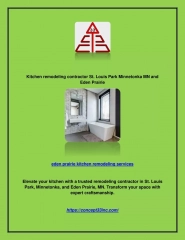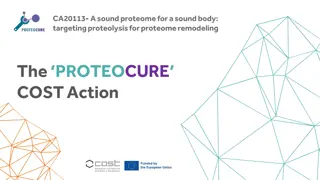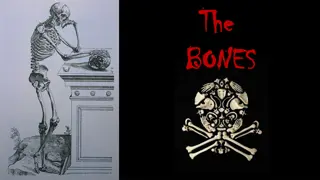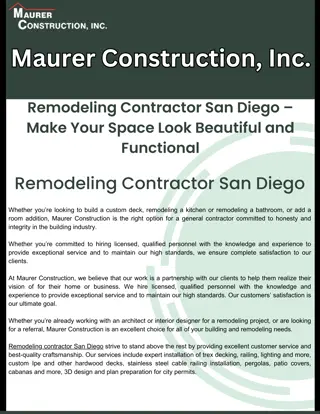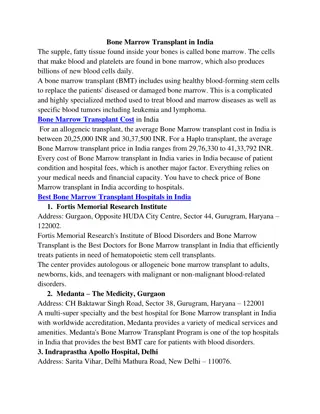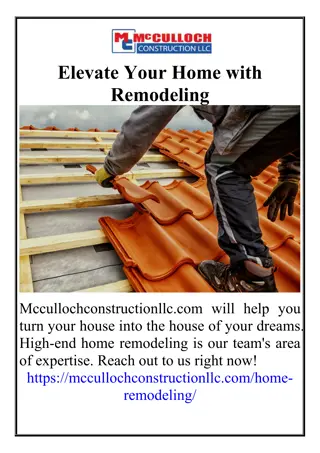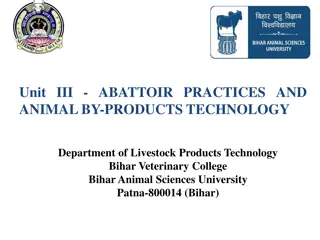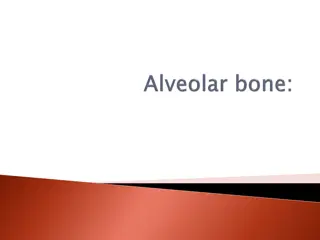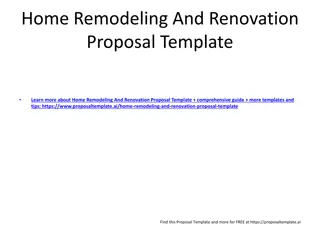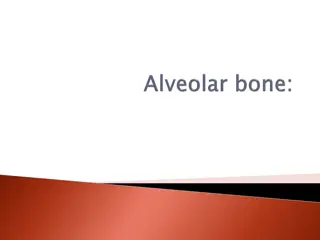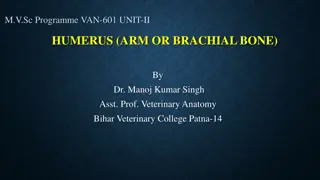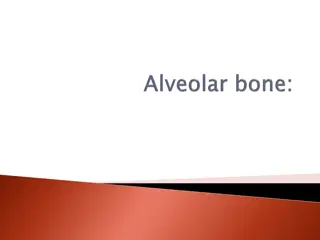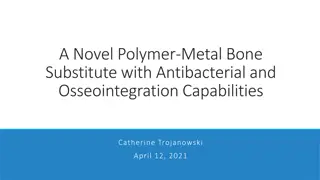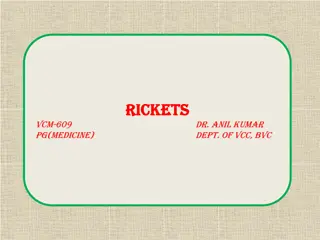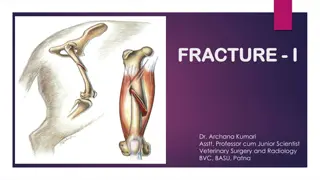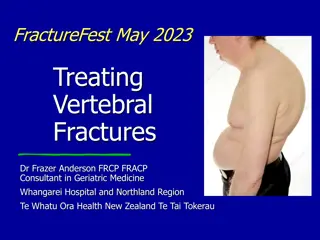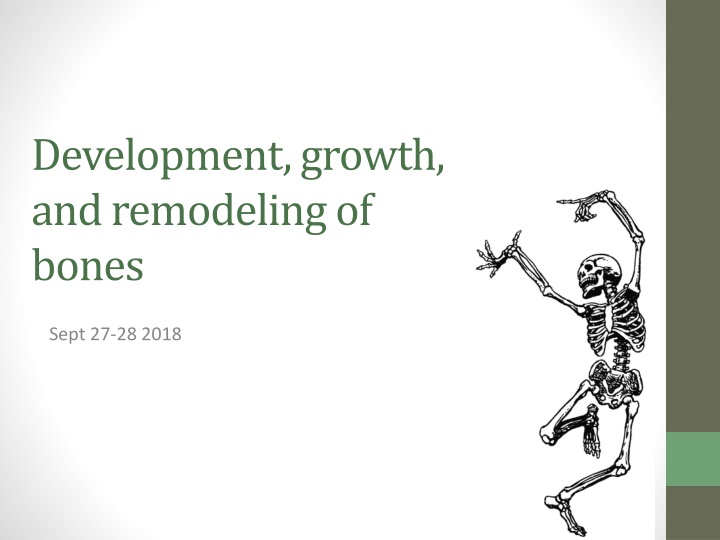
Insights into Bone Development and Growth
Discover the intricate processes of bone development, growth, and remodeling through visuals and explanations. Explore concepts such as osteocytes, osteoblasts, and osteoclasts, along with understanding bone growth from embryonic stages to adolescence. Learn how x-rays demonstrate bone development and the role of epiphyseal plates in bone length growth.
Download Presentation

Please find below an Image/Link to download the presentation.
The content on the website is provided AS IS for your information and personal use only. It may not be sold, licensed, or shared on other websites without obtaining consent from the author. If you encounter any issues during the download, it is possible that the publisher has removed the file from their server.
You are allowed to download the files provided on this website for personal or commercial use, subject to the condition that they are used lawfully. All files are the property of their respective owners.
The content on the website is provided AS IS for your information and personal use only. It may not be sold, licensed, or shared on other websites without obtaining consent from the author.
E N D
Presentation Transcript
Development, growth, and remodeling of bones Sept 27-28 2018
Important vocabulary What is an osteocyte? A mature bone cell Two new words: Osteoblast bone forming cell Osteoclast bone dissolving cell Mnemonic: osteoblast bone building osteoclast bone consuming
Bone Growth & Development Embryonic skeleton (A) is made of hyaline cartilage As a fetus (B), Osteoblasts form a bone collar around the diaphysis Osteoclasts digest cartilage in center of diaphysis Osteoblasts form spongy bone in the diaphysis Cartilage in other areas continues to grow D C E B A
Bone Growth & Development As a newborn (C), The medullary cavity forms The epiphyses begin to ossify Throughout childhood (D) and adolescence (E) Bones grow in length & width (more on this) Cartilage is replaced with bone (compact in diaphysis and spongy in epiphyses A D C E B
How do these x-rays demonstrate bone development? http://www.sfu.museum/forensics/trim/s/cms_page_media/92/Figure1EN.png
How do these x-rays demonstrate bone development? The infant has a high percentage of cartilage (which doesn t show on x-ray), whereas the 8 year old s hand is mostly bony Notice the epiphyseal plates. http://www.sfu.museum/forensics/trim/s/cms_page_media/92/Figure1EN.png
Growth in bone length Epiphyseal end of growth plate Cartilage on the side of the epiphyseal plate close to the end of the bone grows by mitosis Diaphysis end of growth plate Cartilage on the side of the epiphyseal plate close to the diaphysis calcify and die Osteoblasts develop spongy bone around the dying cartilage Osteoclasts dissolve the dead cartilage
Growth in bone length During most of childhood, the rate of cartilage growth equals the rate of cartilage destruction / bone formation, so the epiphyseal plate width stays the same length Near the end of adolescence, cartilage growth slows and stops, so the epiphyseal plates narrow then close (are replaced by bone) Fun fact: Ages of plate closure Girls: ~18 years Boys: ~21 years
Growth in bone width Bones grow in width using a process called appositional growth Osteoblasts under the periosteum secrete bone matrix Osteoclasts near the medullary cavity dissolve bone, enlarging the cavity. The osteoblasts create new bone at a slightly faster rate than the osteoblasts destroy bone. This means the bones get wider and slightly thicker as they grow. bone growth
Think, Pair, Share Where in the bone does bone deposition (bone building) occur? Where does cartilage grow? Where is bone resorbed?
Regulation of Bone Growth Hormones regulate bone growth during youth. Growth Hormone (secreted by pituitary) is the primary hormone responsible for bone growth in infancy and childhood Testosterone and Estrogen (secreted by testes / ovaries) Cause a growth spurt in adolescence Cause the masculinization / feminization of the skeleton Later cause epiphyseal plate closure Compared to females, male skeletons have Heavier bones Enlarged rib cages Smaller pelvic opening Larger brow, mandible, and occipital protuberance Although most bones stop growing in late teens, some of your facial bones (e.g. nose, jaw) grow throughout life.
Bone Remodeling Throughout our lives, our bones are constantly remodeled . Old bone is digested and new bone is formed. Purposes of remodeling: Regulate blood calcium Repair damaged areas Add strength to areas that need it Maintain proper bone shape throughout growth Fun fact: Spongy bone is replaced every 3-4 years; compact bone is replaced every ~10 years. Bone density in athletes! Process of remodeling Osteoclasts break down bone tissue and release calcium into the blood Osteoblasts create new bone tissue, taking calcium from the blood
Regulation of Bone Remodeling Bone remodeling is controlled by two factors: Hormones that regulate blood calcium levels determines whether more deposition or resorption occurs Mechanical stress determines where more bone is needed Calcium has many uses in our body. Precise levels of calcium are necessary for: Nerve impulse transmission Muscle contraction Blood coagulation Cell division
Hormonal Regulation of Bone Remodeling
The Role of Mechanical Stress Although the role of mechanical stress (how much tension and compression bones experience) is not fully understood we do know that: Areas that experience greater stress have greater bone deposition Areas that experience little stress have greater bone resorption Without gravity, astronauts have little stress on their bones. As a result, they lose bone density at an alarming rate. Astronauts on Mir lost 1.5% bone mass per month. Compare this to post menopausal women, who lose about 2.5% per year.
You do: Compare and contrast bone growth in length, appositional growth, and bone remodeling in terms of process, location, timing, and regulation.
Closure What were our objectives and how did we accomplish them? How does it relate to our overall unit statement?
Exit Ticket 1. Differentiate between osteocyte, osteoblast, and osteoclast. 2. Name three ways the skeletal system changes from birth to adulthood. 3. What is bone remodeling and when does it occur?

